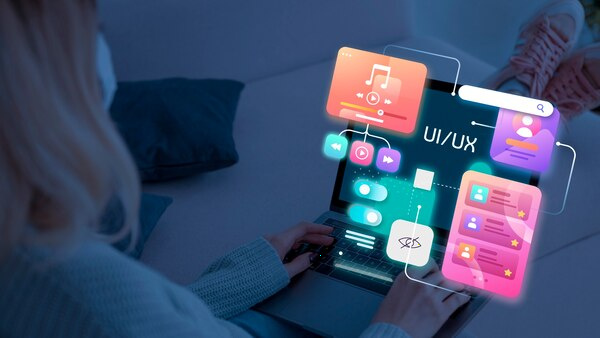Innovative Approaches in UI/UX

In the rapidly evolving digital landscape, the design of user interfaces (UI) and user experiences (UX) has taken center stage. Innovative approaches in UI/UX design aim to improve user interaction, engagement, and satisfaction. Let’s explore some of the cutting-edge trends and methodologies that are shaping the future of digital experiences.
1. User-Centric Design
One of the primary shifts in UI/UX design is the focus on user-centered design. This approach emphasizes understanding the user's needs, behaviors, and journeys. Designers are increasingly employing techniques such as user personas, empathy mapping, and journey mapping. By putting the user at the heart of the design process, creators can tailor experiences that are not only engaging but also intuitive and accessible.
2. Microinteractions
Microinteractions refer to the small, subtle animations or design elements that respond to user actions within an application or website. These can include interactions like button animations, swipe effects, or hover states. Microinteractions add a layer of intuitiveness and feedback, making the digital environment feel alive and responsive. They enhance the user's connection by providing immediate acknowledgment of their actions.
3. Voice User Interfaces (VUIs)
With the rise of virtual assistants like Amazon Alexa, Google Assistant, and Apple Siri, voice user interfaces have gained significant momentum. VUI design focuses on creating seamless and efficient voice-controlled interactions. This technology is particularly impactful in providing hands-free solutions and is becoming a crucial component of accessibility-focused design.
4. Augmented Reality (AR) and Virtual Reality (VR)
Augmented and virtual reality technologies are transforming user interactions by overlaying digital content over the real world and creating immersive environments. In UI/UX, AR and VR offer fresh possibilities in areas like virtual showrooms, interactive learning, and enhanced storytelling. These technologies enhance user engagement and offer experiences that are both immersive and interactive.
5. Minimalist and Fluent Design
The minimalist design approach remains evergreen, focusing on simplicity and functionality. This trend is characterized by clean lines, white spaces, and a limited color palette. Alongside this, Fluent Design—a method introduced by Microsoft—adds depth and dimension through the use of light, depth, motion, material, and scale. This blend of minimalism with dynamic, multi-layered designs results in visually appealing and user-friendly interfaces.
6. Dark Mode and Customizable UI
Dark mode has rapidly gained popularity as a feature that not only saves battery life on devices with OLED screens but also reduces eye strain. Users can shift between dark and light environments based on their preferences or lighting conditions, enhancing comfort and personalizing their digital experiences.
7. Emotional Design
Emotional design aims to create deeper connections by evoking emotions through aesthetics and interaction. Techniques such as storytelling, meaningful animations, and thoughtful narratives aim to resonate with users on a personal level. This approach enhances user satisfaction by making the interaction memorable and emotionally rewarding.
8. Artificial Intelligence and Machine Learning
Artificial intelligence (AI) and machine learning are revolutionizing UI/UX design by introducing personalized and adaptive experiences. Intelligent systems can analyze user behaviors and preferences to customize interactions, suggest content, and even predict user needs. AI-driven chatbots and virtual assistants can enhance customer support and automate routine tasks, improving overall efficiency.
Conclusion
As digital products become more integrated into our daily lives, the importance of innovative UI/UX design cannot be overstressed. The trends and methodologies highlighted here represent just a portion of the ongoing advancements. As technology continues to evolve, so too will the strategies that designers employ to create more effective, enjoyable, and human-centered experiences. By staying ahead of these trends, businesses and designers can ensure that they meet user expectations and provide lasting value.